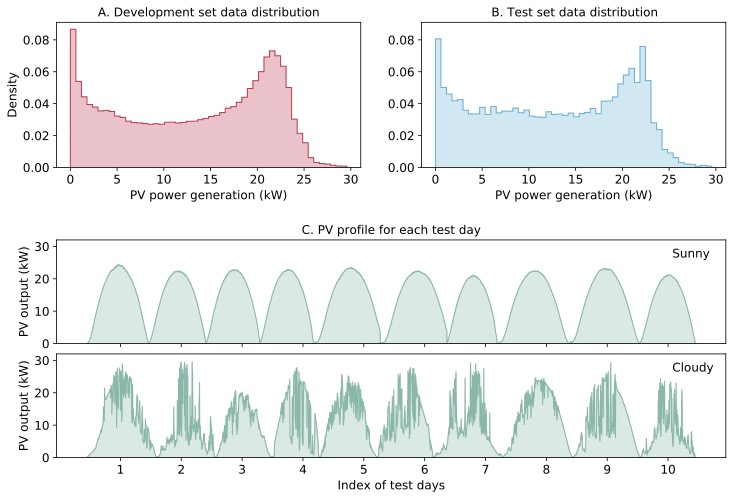SkyGPT: Probabilistic Short-term Solar Forecasting Using Synthetic Sky Videos from Physics-constrained VideoGPT
In recent years, deep learning-based solar forecasting using all-sky images has emerged as a promising approach for alleviating uncertainty in PV power generation. However, the stochastic nature of cloud movement remains a major challenge for accurate and reliable solar forecasting. With the recent advances in generative artificial intelligence, the synthesis of visually plausible yet diversified sky videos has potential for aiding in forecasts. In this study, we introduce \emph{SkyGPT}, a physics-informed stochastic video prediction model that is able to generate multiple possible future images of the sky with diverse cloud motion patterns, by using past sky image sequences as input. Extensive experiments and comparison with benchmark video prediction models demonstrate the effectiveness of the proposed model in capturing cloud dynamics and generating future sky images with high realism and diversity. Furthermore, we feed the generated future sky images from the video prediction models for 15-minute-ahead probabilistic solar forecasting for a 30-kW roof-top PV system, and compare it with an end-to-end deep learning baseline model SUNSET and a smart persistence model. Better PV output prediction reliability and sharpness is observed by using the predicted sky images generated with SkyGPT compared with other benchmark models, achieving a continuous ranked probability score (CRPS) of 2.81 (13\% better than SUNSET and 23\% better than smart persistence) and a Winkler score of 26.70 for the test set. Although an arbitrary number of futures can be generated from a historical sky image sequence, the results suggest that 10 future scenarios is a good choice that balances probabilistic solar forecasting performance and computational cost.
PDF Abstract
